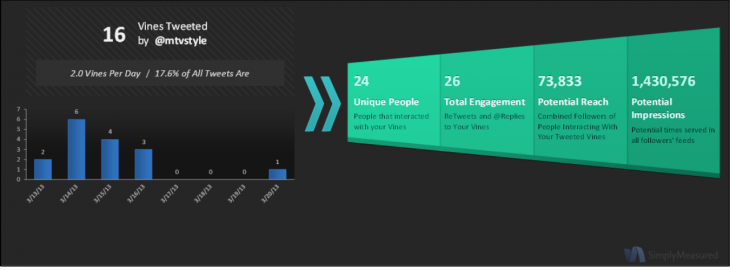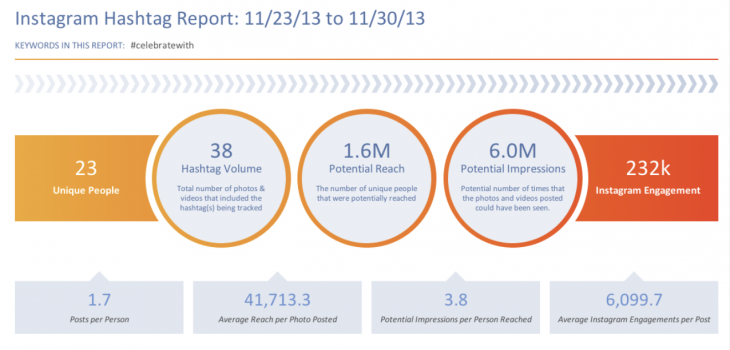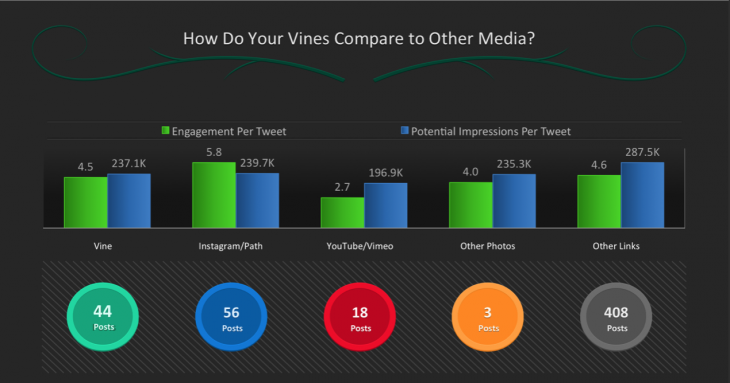
Time is almost always a vital limiting factor in engaging with customers, but Vine and Instagram each impose a strict maximum (six and 15 seconds, respectively). This may seem like a short amount of time, but consider instead how long it takes someone to scroll past a tweet or an individual photo on Instagram.
Comparatively, video content gives you at least 10 times more eyeball time (also, Vines garner nearly four times the screen space of a typical tweet in a Twitter feed). Shouldn’t your brand capitalize on that opportunity? To do so, it’s important to understand how to construct an engaging video and how to measure the success of a post or campaign.
Engagement: Techniques and Strategies
Tool: Pitch’d
Time constraints can create pressure to cram as much content as possible into a finite space. Resist this urge. Instead, tell a story that suits the medium, embracing it’s structures and limitations.
The Tribeca Film Festival took this to heart in 2013, creating a #6secfilm hashtag competition where contestants submitted their videos directly through Vine. To stimulate storytelling, each submission needed a beginning, middle and end to qualify for the contest. Specific yet non-prescriptive guidelines unleashed film enthusiasts’ creativity, and thousands of submissions poured in.
If that sounds overwhelming, a tool like Pitch’d facilitates easy creation and management of such competitions.
The contest mentioned above was so successful that TFF has already confirmed a 2014 version of the event. See one of the winning submissions from 2013 below:
Instagram video, Vine’s slightly lengthier competitor in the social video space (up to 15 seconds of recording time), is perfect for sharing clips with multiple cuts or scenes. The slightly extended running time allows for a less frenetic pace, reducing chances of viewers’ queasiness from watching your video.
Add continuity throughout scenes by keeping either the foreground or background of a shot consistent, even while the other changes. The athletic wear and lifestyle brand Adidas features several stellar examples on its Instagram account (and more on the @adidaswomen feed), showcasing carefree, stop-motion product demos on a neutral background.
Activewear competitor Lululemon does the opposite, following a woman doing a single yoga progression through various locations and climates. Either way, a single visual theme keeps social videos focused and on-message.
Aside from learning to produce content for particular time constraints, be sure to experiment with the quirks of each platform. Vine plays each six-second clip as an infinite loop, and the corresponding #loop hashtag is a recurring trend. Clips that take advantage of looping are satisfying to view – and they encourage watching beyond the typical six seconds.
Vine and Instagram video are the two Internet-age platforms that lend themselves to marketing most analogous to traditional television spots. While the above techniques play off the particularities of each platform, a single-shot clip or dramatic scene plays well on social video. In other words: brands can post ads as content. But the onus on relevant, interesting content is even higher.
Remember, viewers are inviting brands into their feeds – not merely enduring momentary interruptions between their chosen show. Whether a brand pays for ad promotion on these platforms or not, quality content is the only way to secure a ‘follow’ and ensure a customer sees every new post. Social video must be clear, creative and visually arresting to capitalize on the opportunity for viewers to share and promote your brand.
Metrics & Analytics: Is the brand succeeding? How do you know?
Tools: Hashtracking, Simply Measured
Mention ‘sharing’ in the context of any social network, and a discussion of goals, metrics and analytics is never too far behind. How is success measured in social video? This is the main divergence point for Vine and Instagram. Vine, purchased by Twitter even before its app went public, includes a ‘ReVine” function for viewers to easily re-share a Vine with their followers.
If you’re already comfortable analyzing account performance on Twitter, the close integration of Vine and Twitter makes analysis of Vine performance second nature. For example, use a free service like Hashtracking to measure the success of your Vine hashtags or contests on Twitter. Look for replies, shares and favorites of a post to track engagement with your video content.
Instagram is a bit different. While there are #regrams and re-gramming apps, they’re generally clunky and not widely used. Hyperlinks and click-throughs are also absent, so on-platform engagement is simplified to four categories: comments, likes, hashtags and @name tagging.
An Instagram video is unlikely to send people to a specific corner of your website – nobody will take the time to type an intricate URL into their browser bar – but you can engage people directly on the platform, and your goals should center on the aforementioned four items. Also look at the performance of videos compared to photos on the platform.
On both Vine and Instagram, brands often reference themselves as a hashtag instead of an “@” link to their profile. Fashion labels were among the first to employ this technique. Instead of their brand conversation centering on a single profile, pushing out advertising, hashtagging opens up the discussion to include user-generated content.
Now, any customer can tout their most recent purchase right alongside the latest fashion week videos for #Burberry. For Vine and Instagram alike, this is the gold-standard for engagement. A trending video obviously benefits a brand. But a brand’s trending hashtag essentially gathers and promotes testimonials and independently-created advertisements. Hashtags and related contests fully exploit the social aspects of Vine and Instagram. Befitting this reality, social media analytics platforms can also track the performance of hashtags meaningful to a particular brand or industry.
Whether you’re using Vine, Instagram video, or both, weigh the performance of your social videos against other branded social content to discern what your customers interact with the most. If you’re using both, try a service like Simply Measured with tools to track and compare success on Vine and Instagram.
Focus on where creativity and message are rewarded with engagement, as you would with anything your brand publishes. Then, replicate the lessons you learn across your social accounts. That’s what it takes to turn microseconds of social media into long-term brand loyalty.
Get the TNW newsletter
Get the most important tech news in your inbox each week.









